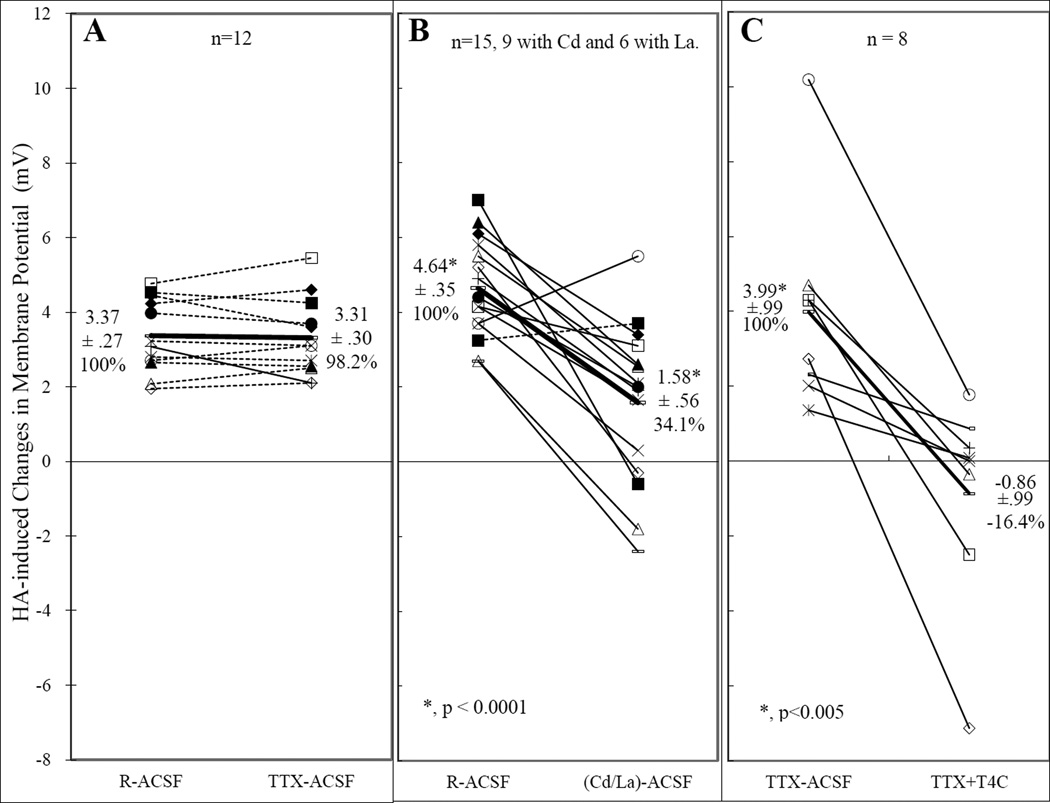Fig. 3.
Effects of Na+ (A), Ca++ (B) and K+ (C) channel blockers on responses of VMN neurons to histamine (HA). Each line connecting a pair of identical symbols denotes the change in HA induced responses (changes in membrane potential, Vm) measured from a single neuron in control solution and in solution containing test channel blockers. Solid lines indicate that the test blockers caused a change beyond ±20% of the control (R-ACSF) and is regarded as having an effect. Dotted lines indicate that the changes were within ±20% of the control. The thick lines are the averages, with the values (mean ±SEM and % over the control) listed next to them. In A, all lines, except the thick one, are dotted, indicating that TTX had no effect on HA depolarization. In B, Ca++ channel blockers reduced HA depolarization in 13 neurons and converted 4 of them from depolarization into hyperpolarization. However, one neuron was not affected and another was even enhanced. Neurons in C were initially bath in TTX-ACSF (ACSF containing 0.5 µM of TTX) and then switched to TTX+T4C, ACSF containing TTX and a combination of K+ channel blockers, including tetraethylammonium (TEA, 40 mM), 4-aminopyridine (4-AP, 5 mM) and Cs+ (2 mM). This combination reduced HA depolarization in all of the neurons tested and virtually abolished the depolarization of this group of neurons.

